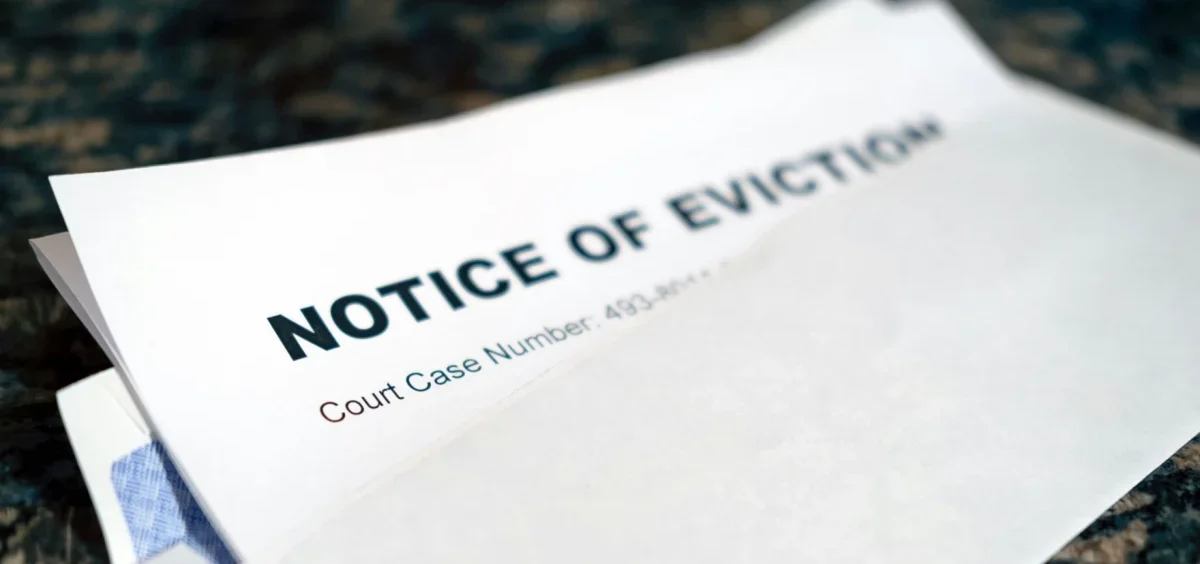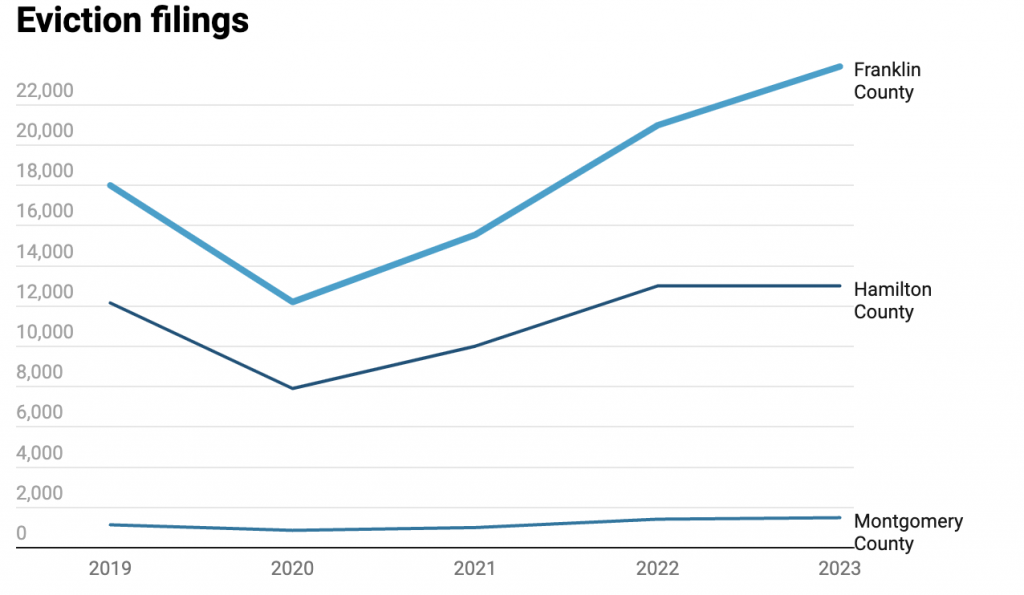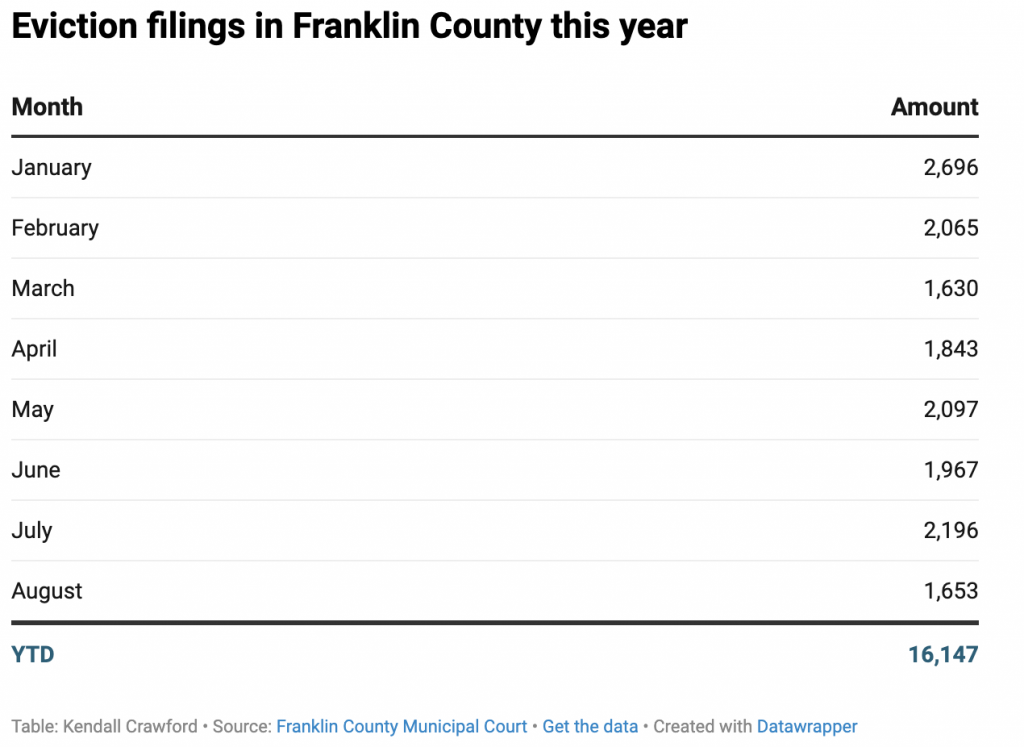News

Ohio’s eviction rates surged last year — and they’re not slowing down
By: Kendall Crawford | The Ohio Newsroom
Posted on:
COLUMBUS, Ohio (The Ohio Newsroom) — During the pandemic, emergency rental assistance helped slash the number of evictions in the state. With those funds running out, many Ohio counties’ eviction rates are on the rise again.
The number of eviction filings in Franklin, Hamilton and Montgomery counties surpassed pre-pandemic levels last year and they’ve continued to rise in 2024. More than 100,000 evictions were filed in Ohio last year – the highest amount since 2015.
It’s an acute issue in Columbus, where eviction courts have been inundated as demand for housing in central Ohio grows, said Jyoshu Tsushima, managing attorney with Legal Aid of Southeast and Central Ohio. He said rent has increased by 35% in the city since 2015.
That, combined with a shortage of housing units, has put many tenants in a vulnerable spot.
“For folks who do not have competitive incomes, it becomes a lot more difficult for them to keep up with the rising rental rates when it’s so easy to find new renters who are able to pay higher rents,” Tsushima said.

“[Rural counties] no longer have any access to emergency rental assistance,” Riegel said, “which is why we’re also seeing a more steady rise in evictions and homelessness and housing instability in those rural communities.”
Ohio’s eviction laws
Ohio’s eviction laws are stricter than those in many states, according to Tsushima. He said the state lacks some tenant protections that could curb eviction numbers.
For example, Tsushima said Ohio doesn’t have a pay-to-stay policy. That allows landlords to evict tenants if they are late on rent, regardless of the timeline.
“Even if you’re like a minute, an hour, a day late, even with a late fee, the landlord can often refuse the rent,” Tsushima said.
Tsushima also said Ohio law currently prohibits state municipalities from implementing rent control. Cities like Columbus have considered regulating rent, but, two years ago, state lawmakers made it illegal to do so.
“Rent control measures are ineffective and counterproductive tools that do not help the housing market or the current shortage of affordable housing — they only exacerbate the problem,” said Vena Jones-Cox with the Ohio Real Estate Investors Association in her 2022 testimony for the bill. “Though well-intentioned, these policies universally create a ‘black market’ that puts those most in need of quality affordable housing at a serious disadvantage.”
Bucking the trend
Despite the statewide trend, eviction rates in some Ohio communities, like Cleveland and Toledo, have actually decreased in recent years. In Cleveland, eviction rates decreased by nearly 20% from 2019 to 2023.
Tsushima suspects that has to do with local housing policies in those communities. In 2020, Cleveland instituted a right to counsel, which ensures that low-income tenants have legal representation in eviction cases. Toledo followed suit a couple years later.
“These tenants are able to go to court knowing that they actually have counsel that’s going to be there with them,” Tsushima said.
Cleveland also has a specialized court with judges that have expertise in housing law.
“So the process may be a little bit more thorough compared to, say, a rural county where you have a judge or magistrate who is responsible for a very broad spectrum of legal issues and doesn’t necessarily have the time to be able to focus on the specialties of every type of housing a legal issue that comes their way,” he said.
Eviction leaves a lasting impact
When eviction rates do rise, Riegel with COHHIO said low-income communities are hit the hardest. She said it can lead to homelessness and hurt a person’s ability to achieve housing stability in the future.
“It remains on your records for life. It never goes away. It’s not even like a bankruptcy or bad debt that can be erased after a certain number of years. Those evictions remain and they follow you forever,” she said.
Tsushima said there’s also an emotional cost to evictions: children have to miss school to find new housing, tenants’ physical and mental health can decline and families can be uprooted from their communities.
“We know it impacts the tenants in a real way that has very severe consequences, both for their financial abilities to stay housed, but then also just their social ability to stay in the community and really just live a normal life,” Tsushima said.



